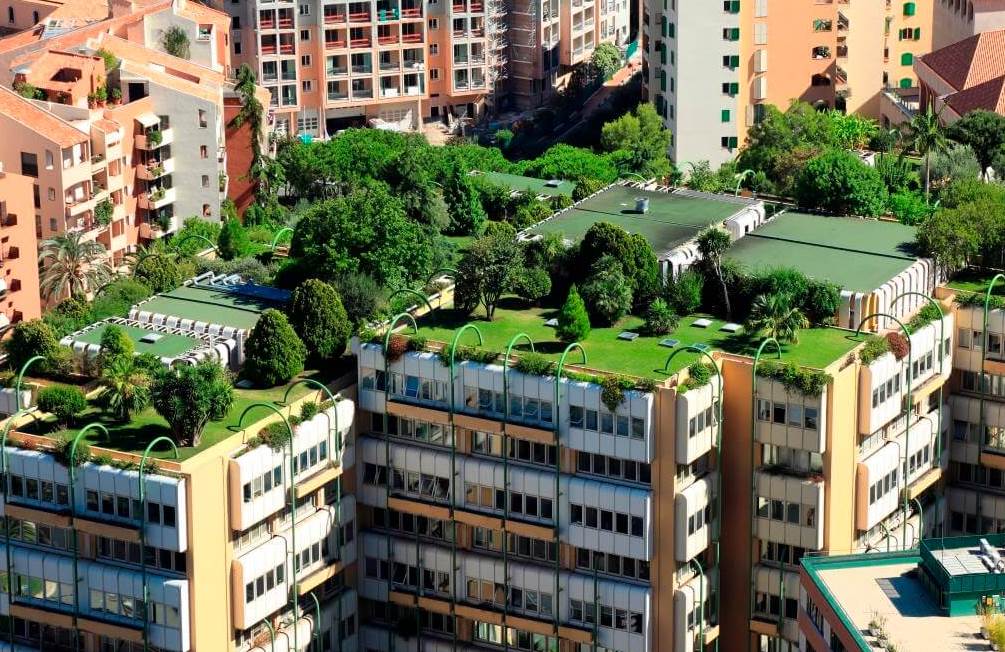
Greening Your Space The Advantages of Green Roofs
As urbanization increases, cities are becoming less green, resulting in several problems. One solution to this is green roofing. Green roofs provide several advantages, including environmental, economic, and social benefits. In this article, we will discuss the advantages of green roofs and how they can be implemented.
Introduction
Green roofs have been around for centuries, but it is only in recent years that they have gained popularity. They are essentially roofs that are covered with vegetation, soil, and other elements that support plant growth. Green roofs are becoming popular due to their many benefits, such as improving air quality, reducing energy costs, and enhancing the aesthetic appeal of buildings.
What are green roofs?
Green roofs are vegetative roofs that consist of layers of vegetation, soil, and drainage. They are also called living roofs or eco-roofs. Green roofs can be categorized into two types: intensive and extensive. Intensive green roofs are thicker and require more maintenance, while extensive green roofs are thinner and require less maintenance.
Intensive green roofs
Intensive green roofs are designed to support a wide variety of plants, including trees and shrubs. They are typically used for recreational areas such as parks and gardens. Intensive green roofs require a lot of maintenance, as they have a deep layer of soil and require regular irrigation.
extensive green roofs
Extensive green roofs are designed to be lightweight and require minimal maintenance. They are typically covered with low-growing plants such as sedum and grasses. Extensive green roofs are perfect for roofs that are difficult to access or have a low load-bearing capacity.
The Advantages of Green Roofs
Green roofs provide several advantages, including environmental, economic, and social benefits.
Environmental Benefits
Green roofs have several environmental benefits. They help to reduce the urban heat island effect by absorbing and deflecting solar radiation. This helps to lower the temperature of the roof surface and the surrounding air. Green roofs also help reduce stormwater runoff by absorbing rainwater and slowly releasing its effects by absorbing and deflecting solar radiation. This helps to lower the temperature of the roof surface and the surrounding air. Green roofs also help reduce stormwater runoff by absorbing rainwater and slowly releasing it. They also help to improve air quality by absorbing pollutants and reducing carbon dioxide levels.
Economic Benefits
Green roofs provide several economic benefits. They help reduce energy costs by providing insulation and reducing the amount of heat that enters the building. This can help lower air conditioning costs in the summer and heating costs in the winter. Green roofs can also extend the lifespan of the roof by protecting it from UV radiation and extreme temperature changes.
Social Benefits
Green roofs provide several social benefits. They enhance the aesthetic appeal of buildings and provide a relaxing environment for building occupants. Green roofs also provide opportunities for urban agriculture and gardening. They can be used to grow fruits and vegetables or as recreational spaces for building occupants.
Implementing green roofs
Implementing green roofs requires careful planning and design. The first step is to determine the type of green roof that is suitable for the building. The load-bearing capacity of the roof, the climate, and the intended use of the roof should be taken into consideration. The design of the green roof should also include a drainage system to prevent water from pooling on the roof.
Maintenance
Green roofs require regular maintenance to ensure their longevity. They should be inspected regularly to ensure that the plants are healthy and the drainage system is functioning properly. The plants should be fertilized and irrigated as needed.
Conclusion
Green roofs provide several advantages, including environmental, economic, and social benefits. They are a great way to green urban spaces and create a more sustainable future. Implementing green roofs requires careful planning and design, but the benefits they provide are worth it.
FAQs
- What is a green roof?
- A “green roof” is a vegetative roof that consists of layers of vegetation, soil, and drainage.
- What are the benefits of green roofs?
- Green roofs provide environmental benefits such as reducing the urban heat island effect and improving air quality. They also provide economic benefits, such as reducing energy costs and extending the lifespan of roofs. Additionally, green roofs provide social benefits by enhancing the aesthetic appeal of buildings and providing opportunities for urban agriculture and gardening.
- What are the types of green roofs?
- Green roofs can be categorized into two types: intensive and extensive. Intensive green roofs are thicker and require more maintenance, while extensive green roofs are thinner and require less maintenance.
- What is the maintenance required for green roofs?
- Green roofs require regular maintenance to ensure their longevity. The plants should be inspected regularly to ensure that they are healthy and that the drainage system is functioning properly. The plants should be fertilized and irrigated as needed.
- How do you implement a green roof?
- Implementing a green roof requires careful planning and design. The first step is to determine the type of green roof that is suitable for the building. The load-bearing capacity of the roof, the climate, and the intended use of the roof should be taken into consideration. The design of the green roof should also include a drainage system to prevent water from pooling on the roof.
